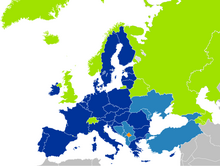
The European Free Trade Association (EFTA) is a regional trade organization and free trade area consisting of four European states: Iceland, Liechtenstein, Norway and Switzerland. The organization operates in parallel with the European Union (EU), and all four member states participate in the European Single Market and are part of the Schengen Area. They are not, however, party to the European Union Customs Union.
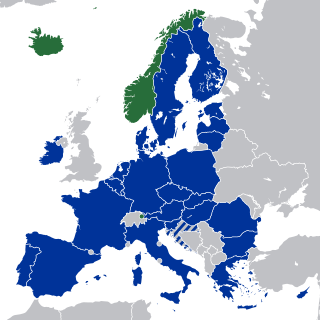
The European Economic Area (EEA) was established via the Agreement on the European Economic Area, an international agreement which enables the extension of the European Union's single market to member states of the European Free Trade Association. The EEA links the EU member states and three of the four EFTA states into an internal market governed by the same basic rules. These rules aim to enable free movement of persons, goods, services, and capital within the European single market, including the freedom to choose residence in any country within this area. The EEA was established on 1 January 1994 upon entry into force of the EEA Agreement. The contracting parties are the EU, its member states, and Iceland, Liechtenstein, and Norway. New members of EFTA would not automatically become party to the EEA Agreement, as each EFTA State decides on its own whether it applies to be party to the EEA Agreement or not. According to Article 128 of the EEA Agreement, "any European State becoming a member of the Community shall, and the Swiss Confederation or any European State becoming a member of EFTA may, apply to become a party to this Agreement. It shall address its application to the EEA Council." EFTA does not envisage political integration. It does not issue legislation, nor does it establish a customs union. Schengen is not a part of the EEA Agreement. However, all of the four EFTA States participate in Schengen and Dublin through bilateral agreements. They all apply the provisions of the relevant Acquis.
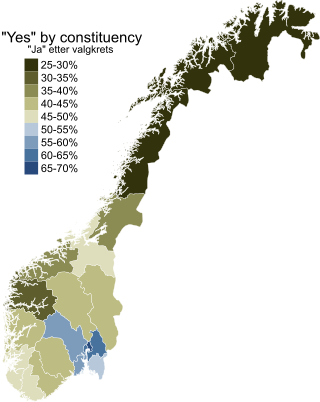
A referendum on joining the European Union was held in Norway on 27 and 28 November 1994. After a long period of heated debate, the "no" side won with 52.2 per cent of the vote, on a turnout of 88.6 per cent. Membership of what was then the European Community had previously been rejected in a 1972 referendum, and by French veto in 1962.

Iceland is heavily integrated into the European Union via the Agreement on the European Economic Area and the Schengen Agreement, despite its status as a non-EU member state. Iceland applied for membership in 2009. The Minister for Foreign Affairs sent a letter in 2015 that ended the application process.
Vidar Sveinung Kleppe is a Norwegian politician. He was a member of parliament and deputy leader of the Progress Party until he was suspended and left the party in 2001. He was the founder and leader of the Democrats party from 2002 to 2012, and has since 2003 held public office as a member of the Vest-Agder county council and the Kristiansand municipal council.

A customs union is the principal area of robust formal agreement between the Principality of Andorra and the European Union (EU). Andorra borders two EU member states: France and Spain.

Norwegian nationality law details the conditions by which an individual is a national of Norway. The primary law governing these requirements is the Norwegian Nationality Act, which came into force on 1 September 2006. Norway is a member state of the European Free Trade Association (EFTA) and the Schengen Area. All Norwegian nationals have automatic and permanent permission to live and work in any European Union (EU) or EFTA country.
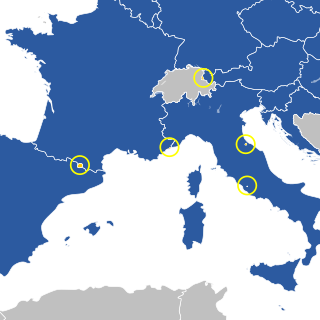
Currently, all of the European microstates have some form of relations with the European Union (EU).
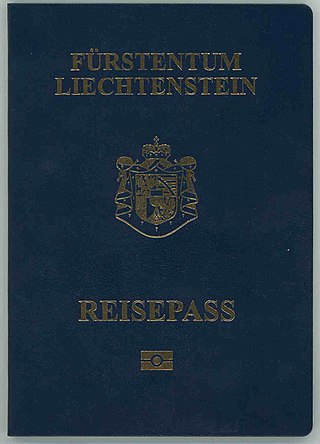
Liechtenstein passports are issued to nationals of Liechtenstein for the purpose of international travel. Beside serving as proof of Liechtenstein citizenship, they facilitate the process of securing assistance from Liechtenstein consular officials abroad.

Nei til EU is the main Norwegian interest group opposing a future Norwegian accession to the European Union (EU). It began informally in 1988 and became a full organization in 1990.
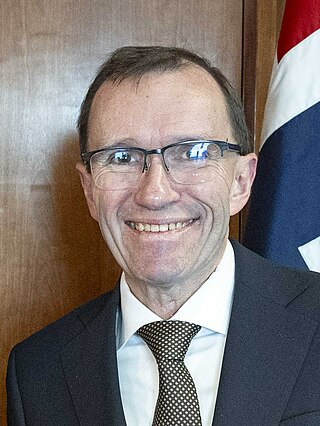
Espen Barth Eide is a Norwegian politician and political scientist. He is currently serving as the Minister of Foreign Affairs in Jonas Gahr Støre's government, having previously done so under Jens Stoltenberg. He has been a member of the Norwegian Parliament since 2017, representing the Labour Party. He was elected to this seat in the 2017 election, and reelected in the 2021 election. From 2017 to 2021, Eide was the Labour Party's spokesperson for Energy, Climate and Environment. He also served as Minister of Climate and the Environment between 2021 and 2023.

The 1995 enlargement of the European Union saw Austria, Finland, and Sweden accede to the European Union (EU). This was the EU's fourth enlargement and came into effect on 1 January of that year. It is also known as the EFTAn Enlargement round All these states were previous members of the European Free Trade Association (EFTA) and had traditionally been less interested in joining the EU than other European countries. Norway had negotiated to join alongside the other three but following the signing of the treaty, membership was turned down by the Norwegian electorate in the 1994 national referendum. Switzerland also applied for membership on 26 May 1992, but withdrew it after a negative referendum result on 6 December 1992.
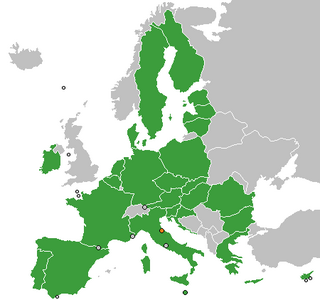
Relations between the Republic of San Marino and the European Union (EU) began in February 1983. San Marino is completely surrounded by one EU member state, Italy.

Relations between the Principality of Monaco and the European Union (EU) are primarily conducted through France. Through that relationship Monaco directly participates in certain EU policies. Monaco is an integral part of the EU customs territory and VAT area, and therefore applies most measures on excise duties and VAT. Monaco borders one EU member state: France. However this relationship does not extend to external trade. Preferential trade agreements between the EU and third countries apply only to goods originating from the customs territory – Monaco may not claim EU origin in this respect.

The 1973 enlargement of the European Communities was the first enlargement of the European Communities (EC), now the European Union (EU). Denmark, Ireland and the United Kingdom (UK) acceded to the EC on 1 January 1973. Gibraltar and Greenland also joined the EC as part of the United Kingdom and Denmark respectively, but the Danish Faroe Islands, the other British Overseas Territories and the Crown dependencies of the United Kingdom did not join the EC.

The United Kingdom (UK) was a member of the European Economic Area (EEA) from 1 January 1994 to 31 December 2020, following the coming into force of the 1992 EEA Agreement. Membership of the EEA is a consequence of membership of the European Union (EU). The UK ceased to be a Contracting Party to the EEA Agreement after its withdrawal from the EU on 31 January 2020, as it was a member of the EEA by virtue of its EU membership, but retained EEA rights during the Brexit transition period, based on Article 126 of the withdrawal agreement between the EU and the UK. During the transition period, which ended on 31 December 2020, the UK and EU negotiated their future relationship.

Sigbjørn Gjelsvik is a Norwegian politician for the Centre Party. He was elected to Parliament in 2017. He also served as minister of local government from 2022 to 2023.
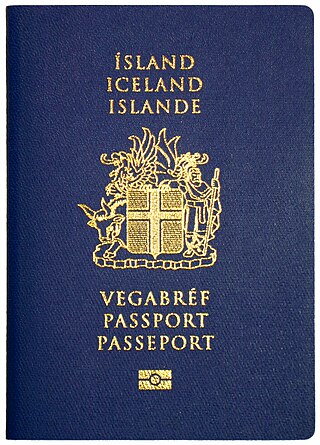
Passports of the EFTA member states are passports issued by the European Free Trade Association (EFTA) member states Iceland, Liechtenstein, Norway and Switzerland. EFTA is in this article used as a common name for these countries.
In British politics, the "Norway-plus model" was a proposal for a post-Brexit settlement, which the British government did not pursue. Proposed in November 2018 as an alternative to the Chequers plan, it would have consisted of membership of the European Free Trade Association (EFTA) and of membership of the European Economic Area (EEA) as an EFTA member state, combined with a separate customs union with the EU to create a trade relationship similar to that between the EU and its member states today, with the exception of the political representation in the EU's bodies. Michel Barnier, the EU's Chief Negotiator, has always said that a model that combined EEA/EFTA and a customs union was one that he would be happy to consider.
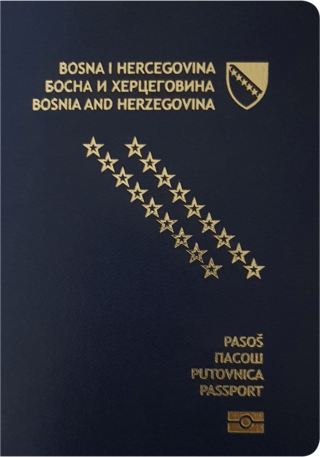
Passports in Europe are issued by each state individually, e.g. the Netherlands or United Kingdom. In general, passports issued in Europe either grant the holder the right of freedom of movement within the European Economic Area, to those that don't. The majority of European states are members of the European Union, and therefore issue EU passports.



